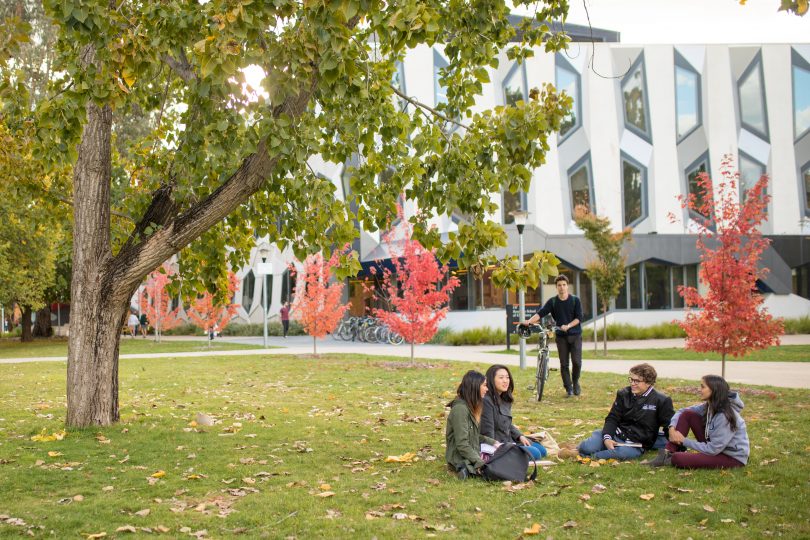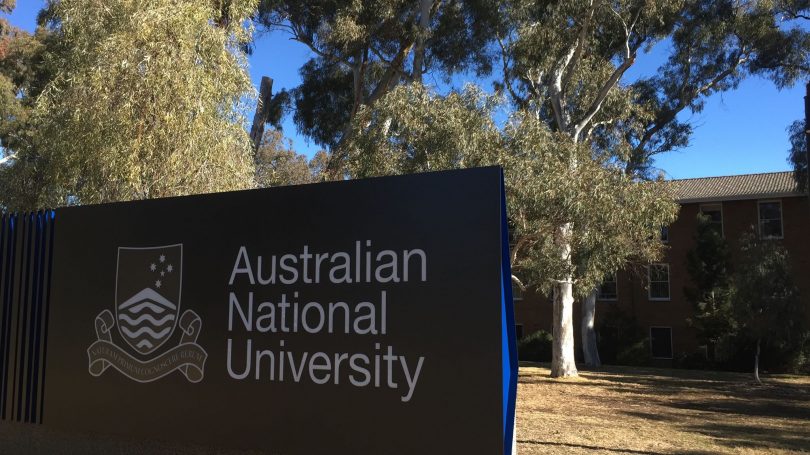
In 2017, 35.8 per cent of ANU students were from overseas, with more than half of these from China, according to the CIS report. Photo: ANU.
The Australian National University has dismissed a report claiming Australia’s universities have exposed themselves to undue financial risk by ramping up the numbers of international students, particularly those from China.
The Centre for Independent Studies report, The China Student Boom and the Risks It Poses to Australian Universities, says universities are taking a multi-billion dollar gamble with taxpayer money to pursue a high-risk, high-reward international growth strategy dominated by booming Chinese enrolments.
It argues that while enrolments have levelled off, the bets of universities like the ANU may still backfire, with taxpayers picking up the tab if a number of political and economic factors come into play. It urges them to start mitigating this risk.
The report also claims that universities have smoothed the way for international students with limited English to enrol and routinely compromise admissions standards, pointing to an ANU alternative pathway for international students that allows them to gain admission with an International English Language Testing System score of just 4.0 (“not able to use complex language”) on individual bands.
It says universities have become dependent on the revenue that overseas student fees generate. The report says that the ANU in 2017 relied on 13 per cent of its revenue from Chinese student course fees alone.
An ANU spokesperson said the university was a research-intensive university and continued to secure half of its revenue from high-quality research activities and outputs.
“Our reputation as one of the great universities of the world is built in part on our international character and ANU has always attracted the best students from around the world. We have always had some of the highest English language and academic standards when it comes to admissions,” the spokesperson said.
“By Australian standards, we have a small student population and a high proportion of students who live on campus. We plan to keep that unique character.
“ANU recently changed our admissions process to ensure we remain a university where students are not lost in a crowd, but are part of a learning community of outstanding students from diverse backgrounds, drawn from across Australia, our region and the world.”
The ANU has said it wants to diversify its sources of international students and that it had reached its student growth limit.
The ANU spokesperson pointed to the Universities Australia response to the report which highlighted the regulator’s recent finding that a vast majority of Australia’s universities were in a low-risk financial position.
Universities Australia said the Tertiary Education Quality and Standards Agency also assessed universities’ risk management systems and plans as part of its re-registration process.
“Australian universities maintain very high admissions standards and strong academic rigour – and those high academic standards safeguard quality and attract international students,” Universities Australia Chair Professor Deborah Terry said.

In 2017, 35.8 per cent of ANU enrolments or 9000 students were from overseas. File photo.
UA said international students injected $37.7 billion into Australia’s economy in 2018-19, according to the latest Australian Bureau of Statistics figures, supporting 240,000 Australian jobs.
The CIS report focuses on seven Australian universities that it says seem to have extraordinary levels of exposure to the Chinese market – University of Melbourne, ANU, University of Sydney, University of New South Wales, University of Technology Sydney, University of Adelaide and University of Queensland (UQ).
It says that on 2017 figures 35.8 per cent of ANU enrolments or 9000 students were from overseas, citing one 2016 estimate that of these 59 per cent were from China.
From 2001-17, international enrolments at the ANU increased 473 per cent. Nationally, 25 per cent of students were from overseas, with 43 per cent of them from China. The report says that in 2017 at the ANU 64.4 per cent ($163,879,359) of the $254,396,000 revenue from international students was from China.
The CIS report says 20 per cent of enrolments at the University of Canberra are from overseas.
The ACT has more than doubled the export value of international education services in Canberra since 2013, and according to the Government is now worth over $1 billion a year to the ACT economy. Australian Bureau of Statistics data released in June show the ACT’s international education exports skyrocketed in 2018, up 15 per cent on 2017 figures to be valued at $1.009 billion.
The CIS report says no public university in the United States has as high a proportion of international students as the average public university in Australia, and that much of the growth in international student numbers has been in business education.
About 10 per cent of all students now attending an Australian university hail from China and the report says these enrolments are particularly unstable because of risk factors such as the slowing of China’s economy, the lack of full convertibility of the Chinese yuan, and fluctuations in the value of the yuan versus the Australian dollar.
Other factors that could impact enrolments are political confrontations between Australia and China, Chinese concerns about the safety of Chinese students in Australia, and changes in Australian immigration policy.
The report says Chinese concerns about the value of an international degree, the rising quality of Chinese domestic degrees and higher admissions standards, particularly English language standards, may also contribute to a drop in enrolments.
The author is Salvatore Babones, an Adjunct Scholar at the Centre for Independent Studies and an Associate Professor at the University of Sydney.
Original Article published by Ian Bushnell on The RiotACT.















